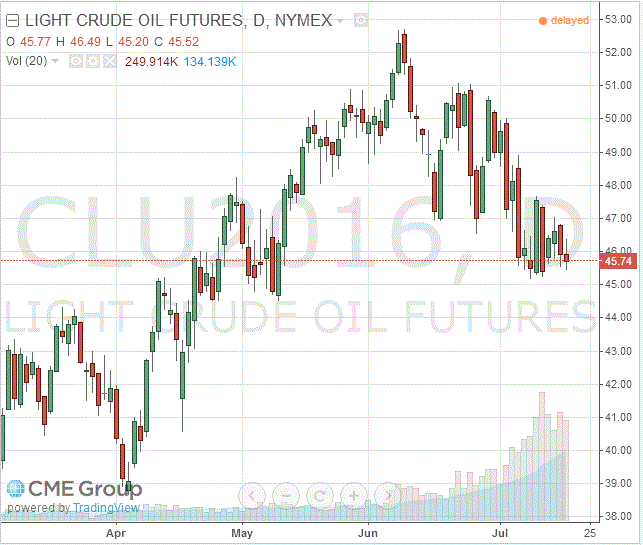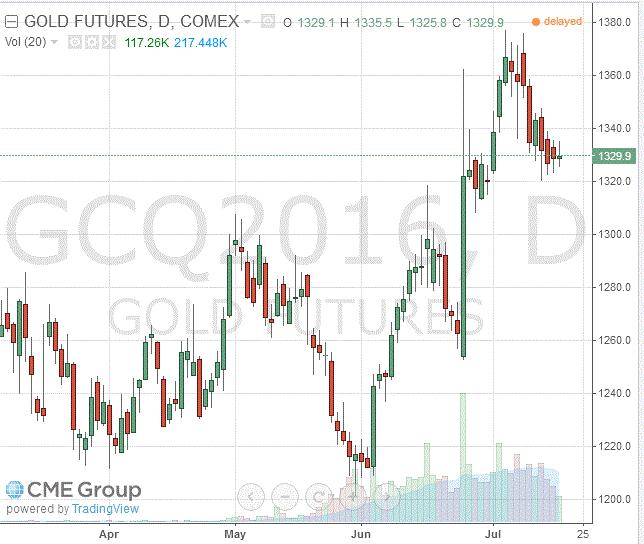Noticias del mercado
-
17:52
Oil fell slightly
Oil futures are trading slightly lower, since the market has concerns about the global oversupply.
A further fall in prices hinder the news of disruptions to oil supply from Libya. Protest over wages led to the closure of the eastern Libyan oil terminal Harigo, forcing production stop at the Safir field. As a result, the supply of Libyan oil decreased by about 100 thousand barrels per day.
Many analysts say, despite the relative stability of oil market fundamentals still look bearish. "We are entering a period when oil markets may feel the more intense pressure as a result of the return of Iran, - said Olivier Jakob, analyst at Petromatrix. - Saudi Arabia comes from the period of maximum demand amid falling margins from refining. And it's not a very good combination for the market. "
Gradually, investors' attention will switch to the weekly data on US petroleum inventories. The American Petroleum Institute will publish its report today, and the official statistics from the US Department of Energy will be released tomorrow. Experts predict that the Ministry of Energy reported a drop of oil to 2.2 million barrels. "Obviously, the production of shale oil in the US has reached a peak and will continue to fall", - said Phil Flynn of Price Futures Group. However, some analysts warn that the decline in US production may be offset by its increase in other regions of the world.
The cost of the September futures on US light crude oil WTI fell to 45.74 dollars per barrel.
September futures price for North Sea petroleum Brent fell to 46.93 dollars a barrel on the London Stock Exchange ICE Futures Europe.

-
17:29
Gold continue to accumulate
Gold moderately increased in price in the first half of the session, but later lost almost all positions on the background of a significant strengthening of the dollar after the release of strong US housing data.
The dollar index rose to its highest level since mid-March making dollar-denominated gold more expensive for holders of foreign currency.
The US Commerce Department reported that housing starts rebounded in June by 4.8 percent to an annual rate of 1.189 million compared with the revised estimate for May at the level of 1.135 million. Building permits, an indicator of future housing demand, also rose by 1.5 percent to an annual rate of 1.153 million in June compared with the revised 1.136 million in May. Economists assumed that the building permit will increase to 1.150 million from 1.138 million, which was originally reported in May.
"Lately we see more positive economic data from the US. Against this background, the likelihood that the Federal Reserve will return to the question of raising rates inceased.", - Said Nitessh Shah. Recall, higher rates have a downward pressure on the price of gold.
The course of trading was also affected by expectations of the European Central Bank meeting outcome. Economists say that the ECB is likely to refrain from further easing, but it can make changes to the bond buying program by expanding the list of assets available for acquisition.
Gold reserves in the largest investment fund SPDR Gold Trust rose yesterday by 0.25 percent and amounted to 965.22 tons.
The cost of the August gold futures on the COMEX rose to $ 1329.90 per ounce.

-
10:32
Oil fell moderatly in early trading
This morning, New York crude oil futures for WTI fell 0.22% to $ 45.84 per barrel and Brent oil futures were down 0.17% to $ 46.86 per barrel. Thus, the black gold fell slightly, amid fears of an excess supply on the market. After the coup in Turkey and the overlap of the Bosphorus Strait, traders expected disruptions of oil supplies to the world markets, but their hopes were dashed. Therefore, oversupply of oil, which continues to remain on the market, adversely affect the price. Also, investors are waiting for the American Petroleum Institute data on oil reserves. Analysts expect US stocks of crude oil to decrease by 2.2 million barrels.
-
00:33
Commodities. Daily history for Jul 18’2016:
(raw materials / closing price /% change)
Oil 45.20 -0.09%
Gold 1,329.10 -0.02%
-